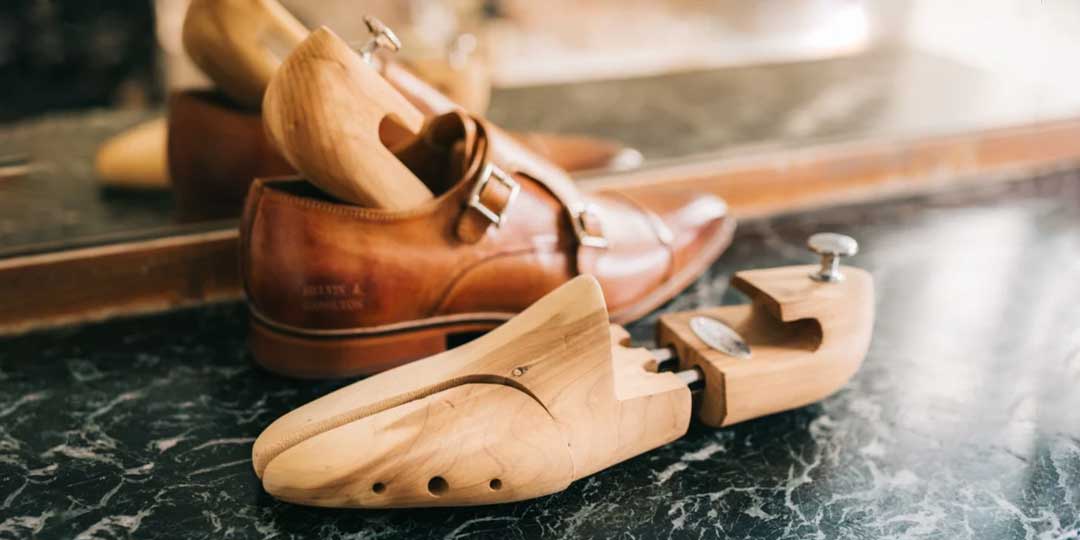I first encountered shoe trees when I needed to re-form and restore a pair of my ‘nice’ leather wingtips. That was about 7 years ago and after I discovered what a shoe tree is, I now own more than half a dozen pairs of shoe trees to take care of my shoes.
I dug deeper into the rabbit hole of shoe care and restoration and today I am writing this guide to answer the questions I once had and some questions you might have about shoe trees and their purpose, let’s begin by answering the most important and most common question people have about shoe trees:
Do I need shoe trees?
Yes, You need a pair of wooden shoe trees to take good care of your nice pair of shoes and increase their life. Shoe trees not only wick the moisture of your feet away from your shoes but also keep them in good form and free of creases and wrinkles that may appear over time.
What material are shoe trees made of?
Shoe trees are made out of many materials, including different types of wood and plastic depending on the price and intended purpose of that particular shoe tree. Most shoe trees are made out of wood to help wick moisture out of the shoes but other types of materials like plastic are also used. Most of the plastic or wood knob or leather handle is on the top of the heel to help pull it outside of the shoe.
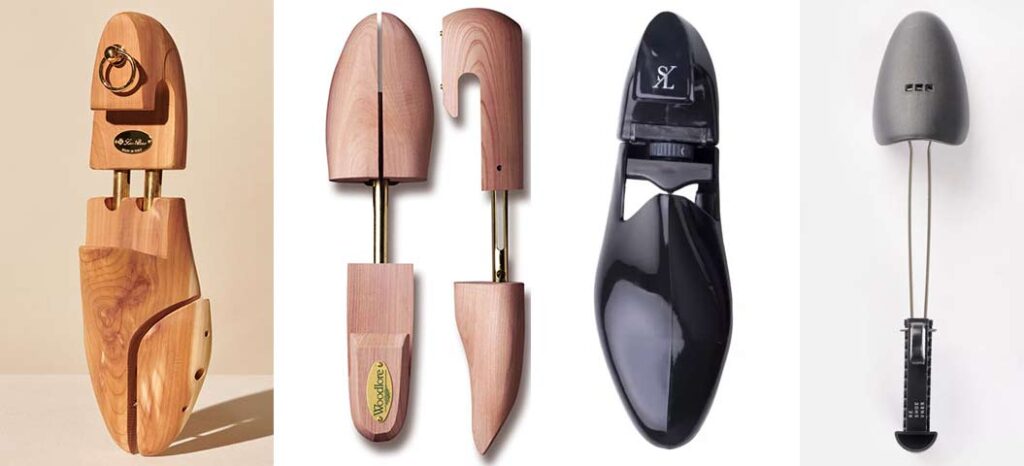
Some shoe trees are made out of multiple blocks of wood, separated by a metal rod and spring bar to suit the form of your shoe’s toe shape and the size of your required shoe. In good shoe trees and especially wood shoe trees there is a wide heel block of wood to apply equal pressure on the heel to not damage the heel and also to keep it in its form. There are two pieces at the front of split-toe shoe trees which I think are best for men’s shoes as they adjust themselves according to the intended shape of the shoes.
There are single block toes in some shoe trees which I would only recommend to the ladies because ladies’ shoes are shaped in a way to take the most advantage of this kind of shoe tree shape.
Plastic shoe trees are usually cheaper but their intended purpose is to use them while traveling because hollow plastic shoe trees can help keep the weight of shoe trees light so the luggage stays as light as possible. Some people use plastic shoe trees because they are cheaper but using a plastic shoe tree is not recommended for full-time use.
Cedarwood Shoe Trees VS Beechwood Shoe Trees
Which one is better? It is a common question people tend to have in their minds but in my experience, the only thing that matters is that the shoe tree is made out of wood. What kind of wood the shoe tree is made out of is just personal preference as both do an equally good job of wicking out moisture and keeping the shoe in shape.
Some people (including some experts) tend to think that cedarwood shoe trees are better for people with smelly feet because the fragrant properties of cedar wood help keep the shoe odor-free. But I believe that it’s just marketing to sell more ‘premium’ and expensive shoe trees because in my experience I have found no evidence of cedar shoe trees being better than shoetrees made out of any other kind of wood.
What do shoe trees do to protect my shoes?
After we wear our shoes for the whole day or even a couple of hours the sweat from our feet gets absorbed in the insole and leather inside of the shoe. Shoe trees help wick the moisture from sweat away so minimal damage is done to the shoe, which helps preserve the shoe’s life.
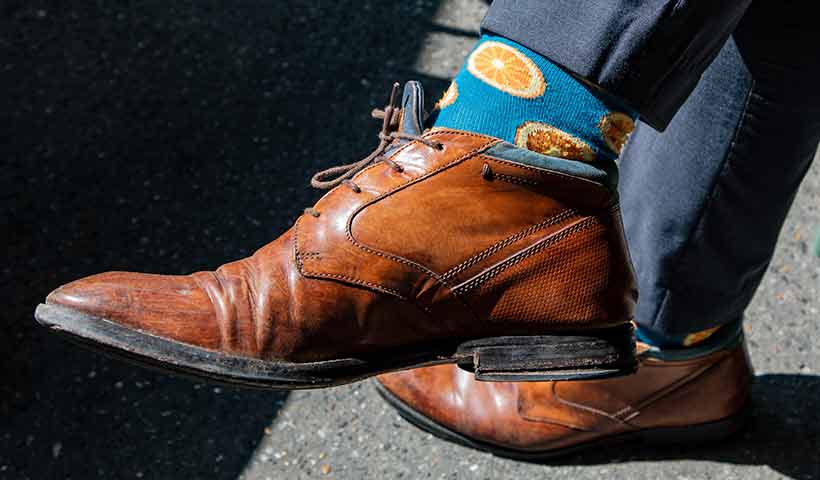
Another benefit of the shoe trees is that they keep our shoes in shape, and minimize the creases, wrinkles, and bends in the vamp of our shoes by applying pressure to straighten the form of the shoe. These wrinkles and bends happen when we wear our shoes and walk, which is natural but if not taken care of properly, they can get to a point of tearing out the shoe from the vamp.
If your expensive shoes have already fallen victim to these bends and creases, don’t worry, it’s still not too late to buy a good shoe tree because shoe trees also help restore the form of the shoes.
I should also mention that one should avoid painted or overly burnished shoe trees as the burnish stops the wood from soaking up the moisture from sweat.
Do shoe trees work for sneakers?
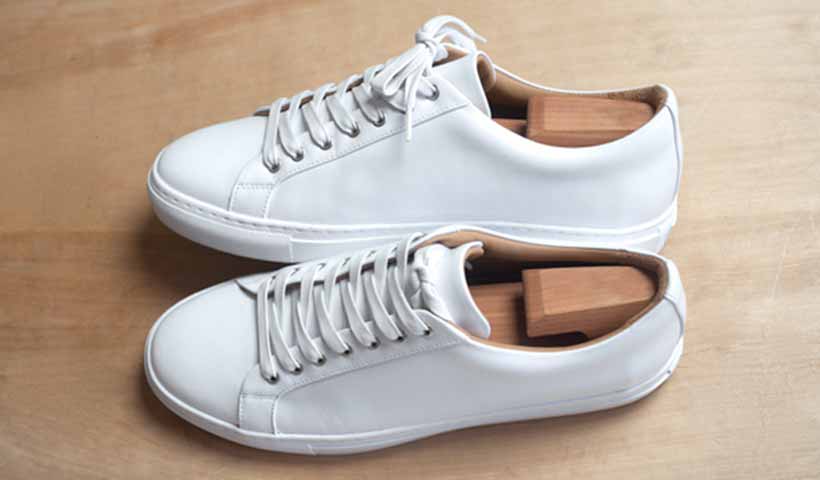
Yes, shoe trees absolutely work for sneakers because like normal shoes, any good pair of sneakers is made out of leather and fabric. Wood shoe trees will help wick the moisture out of your sneakers and keep them in shape. Just spend some time picking out the right type of shoe trees for your sneakers and you are golden.
When to use the shoe trees?
It is recommended to insert shoe trees in shoes right after you take them off so they started wicking the moisture from the shoe right away. Also, to make sure that the creases don’t set in and become permanent. I personally let my shoes sit for 3-5 minutes and then put them in shoe trees. I also have shoe trees in all pairs of my shoes regardless of whether I have used them recently or not because I like to keep my shoes in the right shape.
What kind of shoe trees are best for me?
Plastic shoe trees or wood shoe trees with hollow bottoms are recommended for traveling to keep the weight of luggage down while keeping your shoes from getting mushed around. I also use a cloth bag/pouch to put my shoes in while traveling.
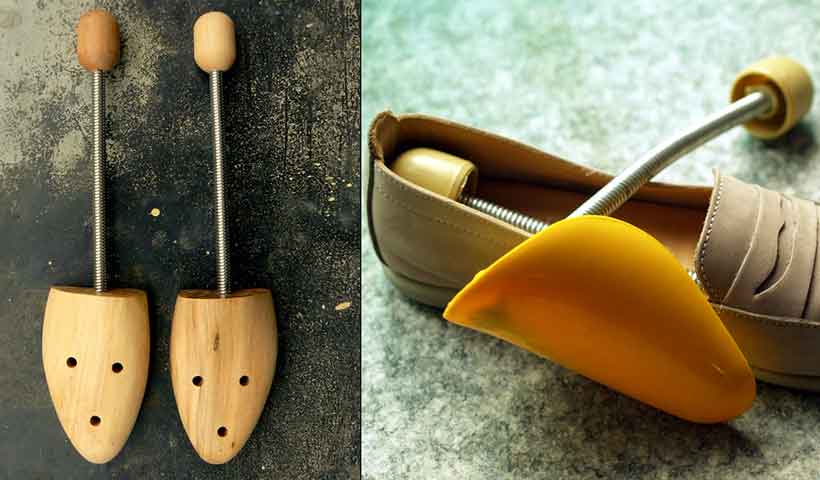
I wouldn’t recommend shoe trees with spring back spine as they damage your insole’s heel area from the inside by putting too much downward pressure on them.
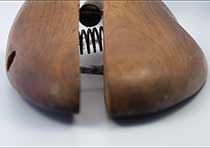
Also in my experience, the shoe trees with Spring-loaded split toes are better as they adjust to the shape of the shoe rather than single-toe shoe trees which aren’t that great for keeping men’s shoes in the correct shape nearly as well.
Conclusion
A cheap plastic shoe tree is better than no shoe tree at all. So if you can’t afford expensive cedarwood shoe trees, I’d recommend you either shave up a little or go with hollow plastic shoe trees and they will still help you keep your shoes in good shape and elongate the life of your shoes.
A lot of bespoke shoe companies and expensive shoes already do come with the shoe tree to match the exact shape and size of the said shoe. So if your pair of shoes already came with a shoe tree, that’s fantastic and you don’t need to buy a shoe tree for that pair of shoes.
